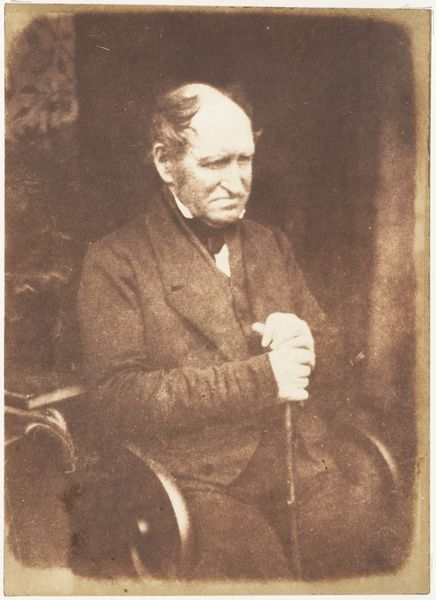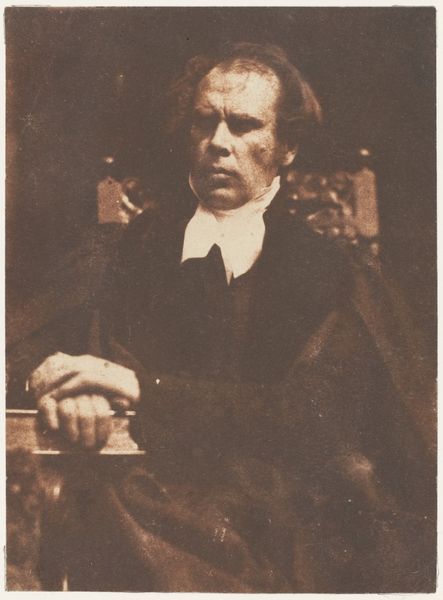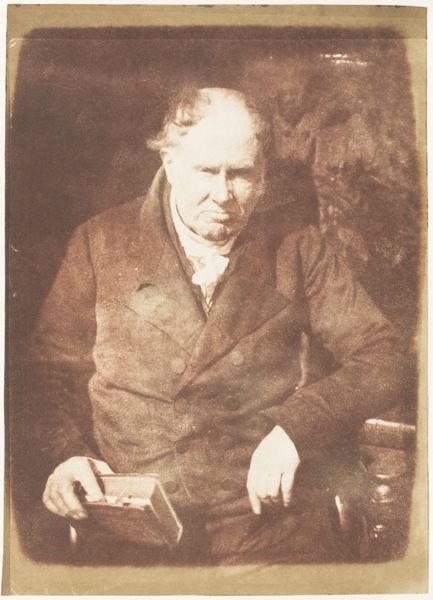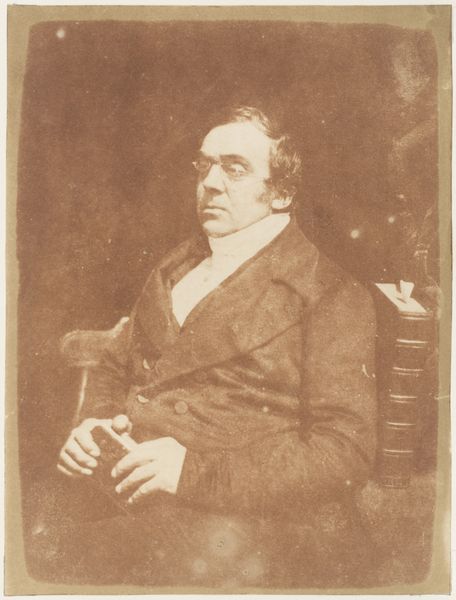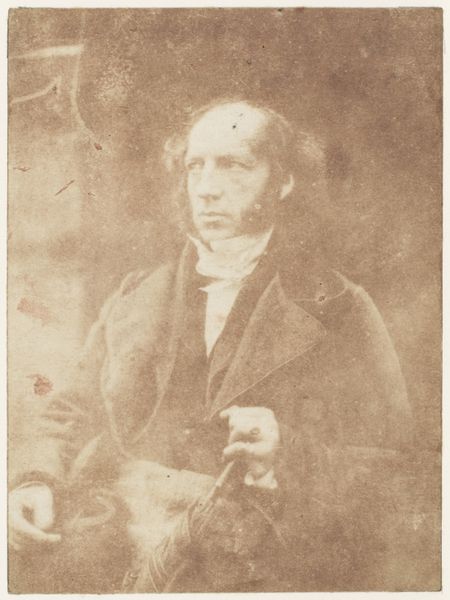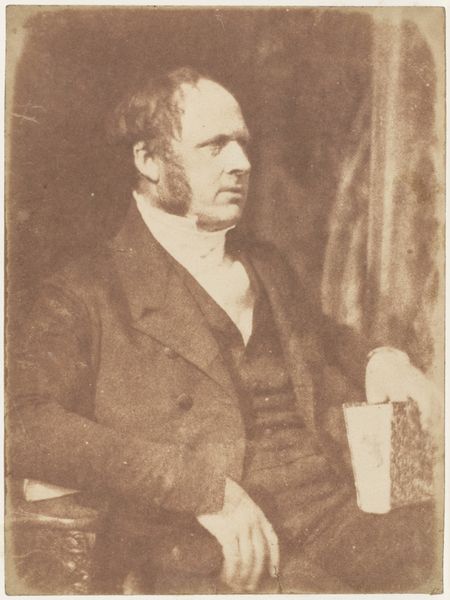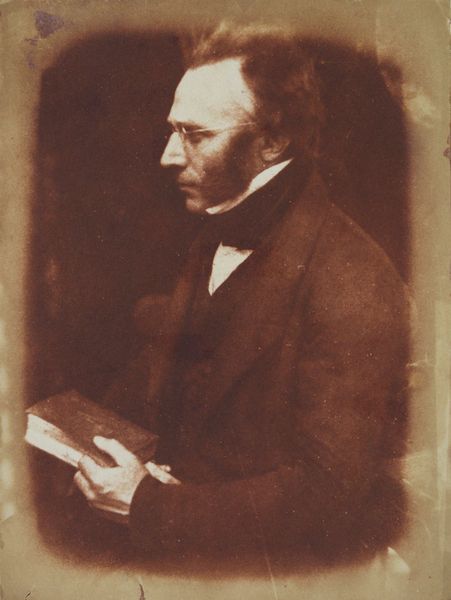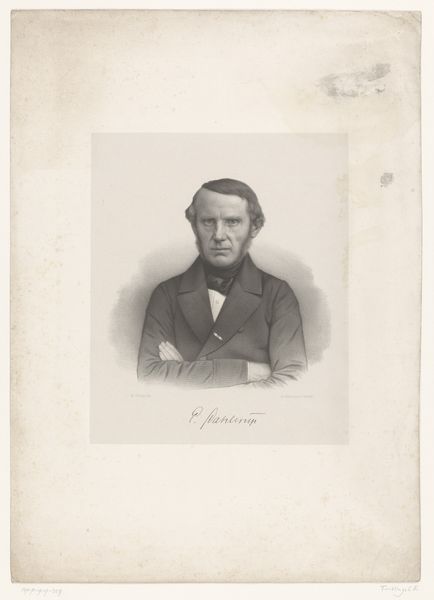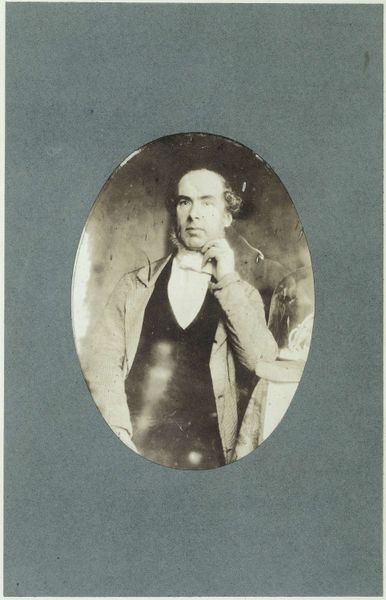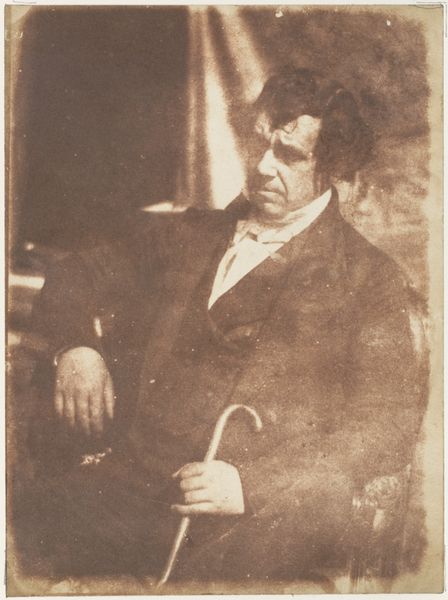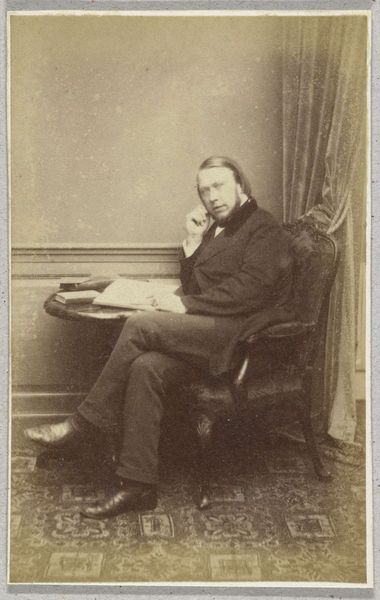
daguerreotype, photography
#
portrait
#
16_19th-century
#
daguerreotype
#
photography
#
romanticism
#
men
Copyright: Public Domain
Editor: So, this daguerreotype, "Rev. Mr. Elder of Watts," made sometime between 1843 and 1847 by Hill and Adamson… It's remarkable how still he is, almost contemplative, you know? What strikes me is how this early photographic process seems to add another layer to the sitter’s personality, sort of solemn, weighty, not just a visual recording. How do you interpret that initial impression? Curator: The stillness is key. It wasn't merely physical, but imbued with meaning. Photography, in its infancy, carried an almost sacred weight, promising to capture the very essence of a person. Think about the symbolism of the book in his hand, or the pose of thoughtful contemplation. Can you feel how these familiar symbols – of learning, of reverence – carry a powerful cultural message? The romantic and literary cultural of the era made a kind of celebrity out of writers, particularly religious writers. He embodies that reverence for the intellectual spirit. Editor: Absolutely, I see what you mean about the books and pose being symbolic! Is there any relationship with painted portraits of the time? Curator: Precisely! Photography sought to inherit the gravitas of portraiture. Look at how the chiaroscuro effect emulates painted portraits, lending drama. Mr. Elder isn't merely sitting for a picture; he's participating in a ritual, solidifying his image for posterity. The daguerreotype’s almost mystical quality served as validation and a cultural act that blended modern technology with classical aspirations. The cultural memory contained in those aesthetic decisions is very resonant. Editor: So, this portrait isn't just about likeness, it’s about constructing and cementing legacy through powerful visual symbols. Fascinating. Curator: Precisely. This process illuminates how symbols resonate over time. We glimpse cultural continuities through the then-modern eye of the camera. It’s about time folding back on itself.
Comments
No comments
Be the first to comment and join the conversation on the ultimate creative platform.
